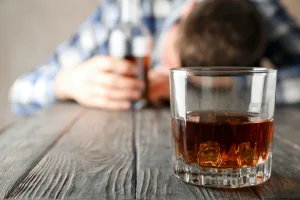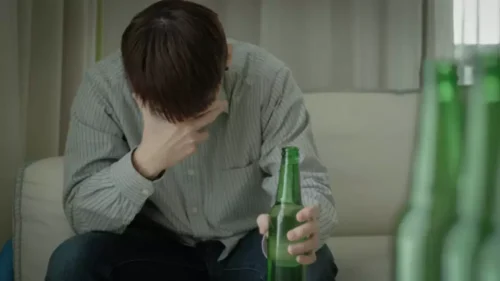PTSD Symptoms, Emotion Dysregulation, and Alcohol-Related Consequences Among College Students with a Trauma History PMC

The IRR indicated that for every unit increase in conduct problems at time t-1 there was a 7% increase in the incident rate of conduct problems at time t. For drinking, the IRR indicates that for every unit increase in drinkingt there is a 47% increase in the incident rate of conduct problems at time t. First, we estimated four multilevel models with days (Level 1 (L1)) nested in person (Level 2 (L2)) predicting daily PTSS, drinking, dependence syndrome, and conduct problems. Drinking, dependence syndrome, and conduct problems were modeled as count variables using a negative binomial distribution and an exposure variable to account for differences in number of daily surveys completed.

AUD before PTSD
Consistent with previous research and theory, we anticipated that affect lability effects would be more pronounced in the dependence syndrome relative to conduct problems model (McCarthy et al., 2010; Simons et al., 2017). The dependence syndrome model included a random intercept, and random slopes for time, time squared, lagged (residual of) PTSS, and (residual of) drinking. The results indicated a significant association between the residual https://ecosoberhouse.com/ PTSSt-1 and dependence syndromet. The Incident Rate Ratio (IRR) indicates that the incident rate of dependence syndrome symptoms at time t increased by 13% for every unit increase in the residual for PTSS at time t-1. This within-person effect was significant after controlling for the residual of dependence syndrome at time t-1 (i.e., the autoregression), drinking at time t, the temporal trend, and the day of the week covariates.

The Role of Dissociation in PTSD Blackouts
Use these free digital, outreach materials in your community and on social media to spread the word about mental health. Use these free education and outreach materials in your community and on social media to spread the word about mental health and related topics. Download, read, and order free NIMH brochures and fact sheets about mental disorders and related topics. NIMH offers expert-reviewed information on mental disorders and a range of topics.

Health Categories to Explore

Twin studies show that if one twin is prone to blackouts, the other is much more likely to also be prone if they are identical, rather than fraternal. Identical twins share 100 percent of their DNA, while fraternal twins only share 50 percent. Being impaired mentally and physically, you might bend easily to peer pressure.

Co-Occurring Disorders
Research indicates that blackouts are more likely to occur when alcohol enters the bloodstream quickly, causing the BAC to rise rapidly. This could happen if someone drinks on an empty stomach or consumes large amounts of alcohol in a short amount of time. Because females, on average, weigh less than males and, pound for pound, have less water in their bodies, they tend to reach higher peak BAC levels than males with each drink and do so more quickly. This helps explain why being female appears to be a risk factor for having blackouts. When it comes to alcohol, it can be helpful to develop other, safer coping mechanisms that won’t make your PTSD worse.
- The main treatments are psychotherapy, medications, or a combination of psychotherapy and medications.
- Some drugs, like sleep or anti-anxiety medications, can cause blackouts at a lower blood-alcohol level.
- This dichotomy highlights the complex ways in which trauma can impact the brain’s memory systems.
- Stronger autoregressive parameters indicate a slower return to baseline or conversely, a carry-over effect of past behavior that is not accounted for by the other time-varying constructs (Hamaker & Grasman, 2015).
- But you can emphasize the risks of blackout drinking with someone of any age.
Getting to NIMH
Effective psychotherapies often emphasize a few key components, including learning skills to help identify triggers and manage symptoms. Thoughts and feelings can trigger these symptoms, as can words, objects, or situations that are reminders of the event. NIMH videos and podcasts featuring science news, lecture series, meetings, seminars, and special events. Information about resources ptsd alcohol blackout such as data, tissue, model organisms and imaging resources to support the NIMH research community. Find out how NIMH engages a range of stakeholder organizations as part of its efforts to ensure the greatest public health impact of the research we support. If multiple people report similar details, intoxicated or not intoxicated, then their testimonies will be given more weight.
- As the hippocampus works to log events, its memory cells are communicating with each other and changing through a process called synaptic plasticity.
- Such variation makes these analyses less amenable to examine systematic change over time in respect to improvement or worsening of symptoms in the sample as a whole.
- This is a critical component of treating PTSD and alcoholism because once a patient becomes sober, PTSD symptoms can seem to be much worse.
- SSRIs may help manage PTSD symptoms such as sadness, worry, anger, and feeling emotionally numb.
AUD and PTSD Symptom Clusters
If you’re experiencing a blackout or brownout, you’re at higher risk for falling, injury and unwanted or unsafe sexual experiences. A person who is blacked out may also throw up while sleeping, which could lead to an increased risk of choking or suffocating. Temporary blackouts are probably due to temporary disruption of theta rhythm input to the hippocampus. Approximately 50 percent of college students who drink have experienced a blackout. The only objective evidence of a blackout is to give someone three unrelated words, have them repeat the words, and then wait five minutes before asking them what the three words were.
 فایل های صوتی جلد 1
فایل های صوتی جلد 1 فایل های صوتی جلد 2
فایل های صوتی جلد 2